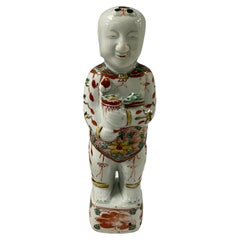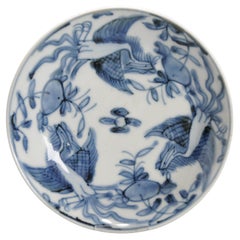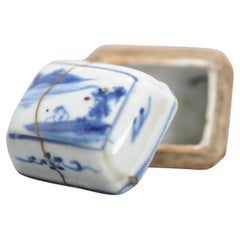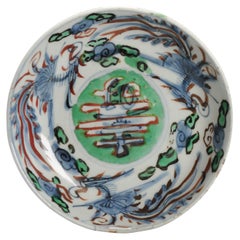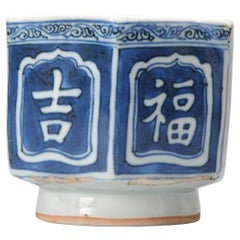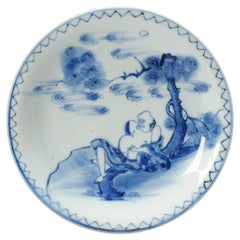17th Century Chinese Porcelain
Antique 17th Century Chinese Ceramics
Porcelain
Antique 17th Century Chinese Ming Ceramics
Porcelain
Antique 17th Century Chinese Ming Ceramics
Porcelain
Antique 17th Century Chinese Ming Ceramics
Porcelain
Antique 1640s Chinese Ceramics
Porcelain
Antique 16th Century Chinese Jars
Porcelain
Antique 16th Century Chinese Ceramics
Porcelain
Antique 17th Century Chinese Decorative Dishes and Vide-Poche
Porcelain
Antique 17th Century Chinese Ceramics
Porcelain
Antique 17th Century Chinese Ceramics
Porcelain
Antique Late 17th Century Dutch Delft and Faience
Earthenware, Delft, Faience
Antique 17th Century Chinese Chinese Export Porcelain
Porcelain
Antique Mid-17th Century Chinese Porcelain
Porcelain
Antique 17th Century Chinese Ming Porcelain
Porcelain
Antique 17th Century Chinese Decorative Dishes and Vide-Poche
Porcelain
Antique 17th Century Chinese Dinner Plates
Porcelain
Antique 17th Century Chinese Dinner Plates
Porcelain
Antique 17th Century Chinese Ming Decorative Dishes and Vide-Poche
Porcelain
Antique 17th Century Chinese Decorative Dishes and Vide-Poche
Porcelain
Antique 17th Century Chinese Jars
Porcelain
Antique 17th Century Chinese Decorative Dishes and Vide-Poche
Porcelain
Antique Early 17th Century Chinese Jars
Porcelain
Antique 17th Century Chinese Ming Decorative Dishes and Vide-Poche
Porcelain
Antique 17th Century Chinese Ming Vases
Porcelain
Antique 17th Century Chinese Ming Ceramics
Porcelain
Antique 17th Century Chinese Qing Ceramics
Porcelain
Antique 17th Century Chinese Decorative Dishes and Vide-Poche
Porcelain
Antique 17th Century Chinese Ming Decorative Bowls
Porcelain
Antique 17th Century Chinese Chinese Export Platters and Serveware
Porcelain
Antique 17th Century Chinese Qing Ceramics
Porcelain
Antique 17th Century Chinese Decorative Dishes and Vide-Poche
Porcelain
Antique 17th Century Chinese Ming Ceramics
Porcelain
Antique 17th Century Chinese Ming Ceramics
Porcelain
Antique 17th Century Chinese Ming Platters and Serveware
Porcelain
Antique 17th Century Chinese Decorative Dishes and Vide-Poche
Porcelain
Antique 17th Century Chinese Decorative Dishes and Vide-Poche
Porcelain
Antique 17th Century Chinese Decorative Dishes and Vide-Poche
Porcelain
Antique 17th Century Chinese Decorative Dishes and Vide-Poche
Porcelain
Antique 17th Century Chinese Ming More Asian Art, Objects and Furniture
Porcelain
Antique 17th Century Chinese Ming Ceramics
Porcelain
Antique 17th Century Chinese Decorative Dishes and Vide-Poche
Porcelain
Antique 17th Century Chinese Decorative Bowls
Porcelain
Antique 17th Century Chinese Ming Ceramics
Porcelain
Antique 17th Century Chinese Ming Decorative Dishes and Vide-Poche
Porcelain
Antique 17th Century Chinese Decorative Bowls
Porcelain
Antique 17th Century Chinese Ming Ceramics
Porcelain
Antique Late 17th Century Chinese Chinoiserie Porcelain
Porcelain
Antique 17th Century Chinese Ming Ceramics
Porcelain
Antique 17th Century Chinese Decorative Dishes and Vide-Poche
Porcelain
Antique 17th Century Chinese Ming Ceramics
Porcelain
Antique 17th Century Chinese Decorative Dishes and Vide-Poche
Porcelain
Antique 17th Century Chinese Decorative Dishes and Vide-Poche
Porcelain
Antique 17th Century Chinese Decorative Dishes and Vide-Poche
Porcelain
Antique Mid-17th Century Chinese Chinoiserie Porcelain
Porcelain
Antique 17th Century Chinese Decorative Dishes and Vide-Poche
Porcelain
Antique 17th Century Chinese Decorative Dishes and Vide-Poche
Porcelain
Antique Late 17th Century Chinese Chinoiserie Porcelain
Porcelain
Antique 17th Century Chinese Decorative Dishes and Vide-Poche
Porcelain
Antique Mid-17th Century Chinese Chinoiserie Porcelain
Porcelain
Antique 18th Century Chinese Qing More Dining and Entertaining
Porcelain
- 1
- ...
17th Century Chinese Porcelain For Sale on 1stDibs
How Much is a 17th Century Chinese Porcelain?
- 1stDibs ExpertApril 5, 2022To identify Chinese export porcelain, first look for a mark. Most pieces made after 1891 feature a maker's mark that you can research using authoritative online resources. Identifying older porcelain ware is more difficult. A licensed appraiser can provide assistance. You'll find a range of expertly vetted Chinese export porcelain on 1stDibs.
 PAGODA REDOctober 21, 2020
PAGODA REDOctober 21, 2020For thousands of years, China’s court-sponsored porcelain industry has been at the forefront of technical innovation and aesthetic refinement. Exquisite finishes and precision of form gave China an international reputation for fine ceramic wares. Age, shape, glaze, motif, and reign mark are all factors contributing to the value of a ceramic piece, indicative of the maker and the dynastic reign under which the object was created.
 Lotus GallerySeptember 15, 2020
Lotus GallerySeptember 15, 2020Chinese porcelain can usually be dated by form and decoration. However, copies and forgeries abound, so you should have an expert such as an appraiser, reputable dealer or auction house, or museum examine your porcelain to accurately date it.
 Lotus GallerySeptember 23, 2020
Lotus GallerySeptember 23, 2020The best way to know is to take it to an expert, such as an appraiser, reputable dealer or auction house, or museum
- What is Chinese porcelain called?2 Answers
 PAGODA REDOctober 7, 2020
PAGODA REDOctober 7, 2020True porcelain ware was developed in the 11th century at the imperial kilns of Jingdezhen, Jiangxi province, China. These early porcelains of the Song and Yuan dynasties are known as Qingbai or Yingqing ware, defined by a light blue-grey glaze. Later forms of Chinese porcelain include blue and white underglaze ware, Celadon ware, Jun ware, Famille Verte ware, Wucai (Five Color) ware, and Dehua ware, also known as Blanc de Chine.
 Lotus GalleryMarch 17, 2021In China, porcelain is referred to a "cíqì" 瓷器.
Lotus GalleryMarch 17, 2021In China, porcelain is referred to a "cíqì" 瓷器. - 1stDibs ExpertSeptember 23, 2024What 17th-century furniture is called varies. The general term for all furniture produced 100 years ago, including 17th-century pieces, is antique furniture. You may also choose to be more specific and describe a piece by its style. Theatrical and lavish, the Baroque style was prevalent across Europe from the 17th to the mid-18th century and spread around the world through colonialism, including in Asia, Africa and the Americas. Baroque furniture was extravagant in all aspects, from shape to materials. 17th-century pieces from England often feature characteristics of the William and Mary style, such as crisp lines, maple and walnut veneers, inlaid bands and C-scroll ornaments. On 1stDibs, explore a variety of antique furniture.
- 1stDibs ExpertApril 5, 2022Sir Isaac Newton invented the reflector telescope in the 17th century. He created it as a replacement for the refracting telescope, which tended to have poor optics. Find a collection of antique and vintage telescopes on 1stDibs from some of the world’s top sellers.
- 1stDibs ExpertApril 5, 202217th-century Dutch portraiture has many similarities to other Baroque paintings, including rich colors, dark shadows and intense lighting. Many famous Dutch Baroque works lean toward realism. In Dutch portraiture, props and detailed backgrounds are uncommon. You'll find a collection of Dutch Baroque paintings from some of the world’s top art dealers on 1stDibs.
- 1stDibs ExpertApril 5, 2022At the end of the 17th century, Europe went into a frenzy over porcelain. Asian porcelain was highly sought after, and spurred the foundation of the Meissen factory in France, where hard porcelain went on to be made. You’ll find a large collection of porcelain pieces from many of the world’s top sellers on 1stDibs.
